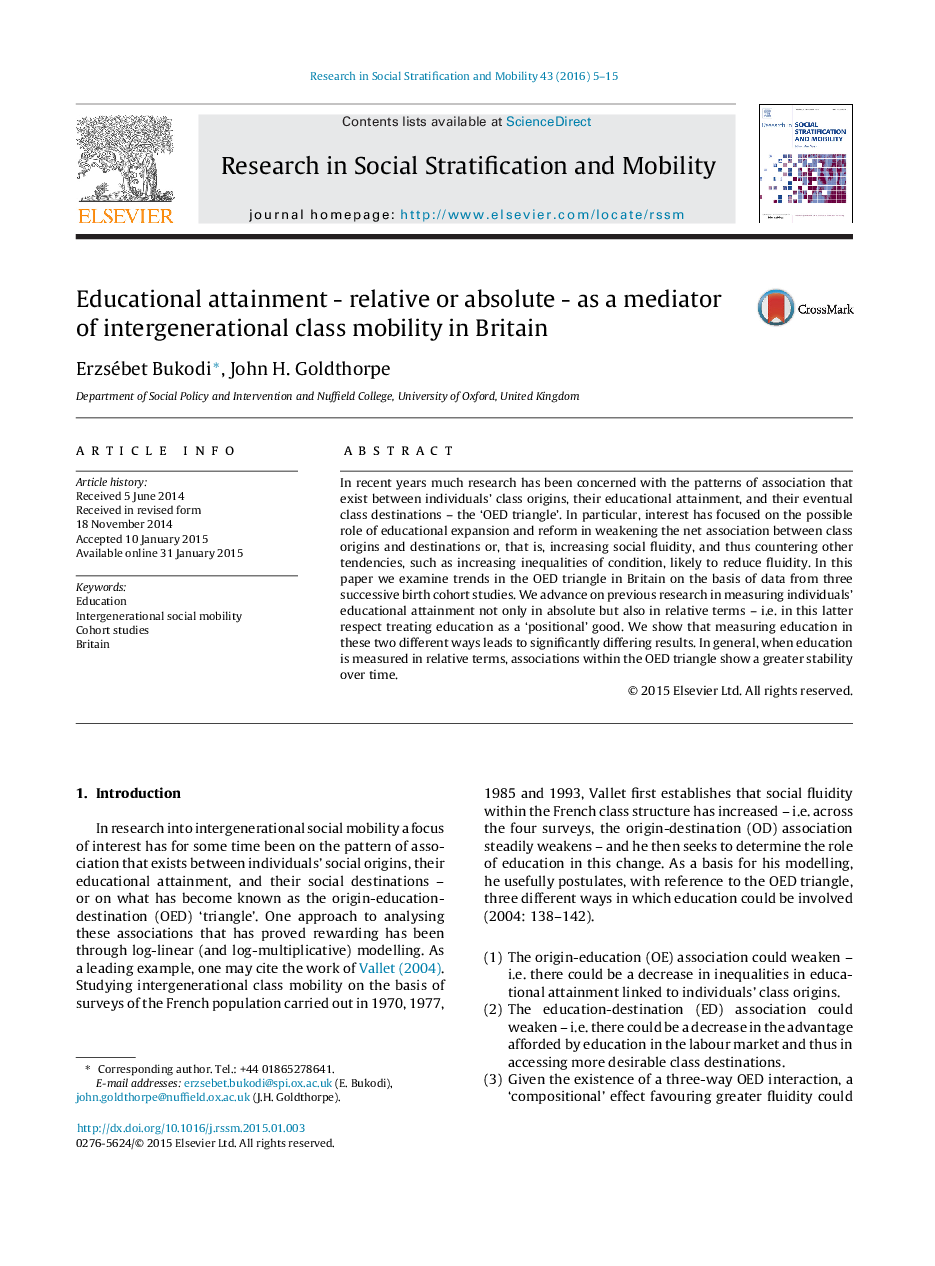| Article ID | Journal | Published Year | Pages | File Type |
|---|---|---|---|---|
| 998564 | Research in Social Stratification and Mobility | 2016 | 11 Pages |
•We examine trends in the OED triangle in Britain.•We measure education not only in absolute but also in relative terms.•We show that measuring education in these different ways leads to significantly differing results.•When education is measured in relative terms, associations in the OED triangle are more stable over time.
In recent years much research has been concerned with the patterns of association that exist between individuals’ class origins, their educational attainment, and their eventual class destinations – the ‘OED triangle’. In particular, interest has focused on the possible role of educational expansion and reform in weakening the net association between class origins and destinations or, that is, increasing social fluidity, and thus countering other tendencies, such as increasing inequalities of condition, likely to reduce fluidity. In this paper we examine trends in the OED triangle in Britain on the basis of data from three successive birth cohort studies. We advance on previous research in measuring individuals’ educational attainment not only in absolute but also in relative terms – i.e. in this latter respect treating education as a ‘positional’ good. We show that measuring education in these two different ways leads to significantly differing results. In general, when education is measured in relative terms, associations within the OED triangle show a greater stability over time.
